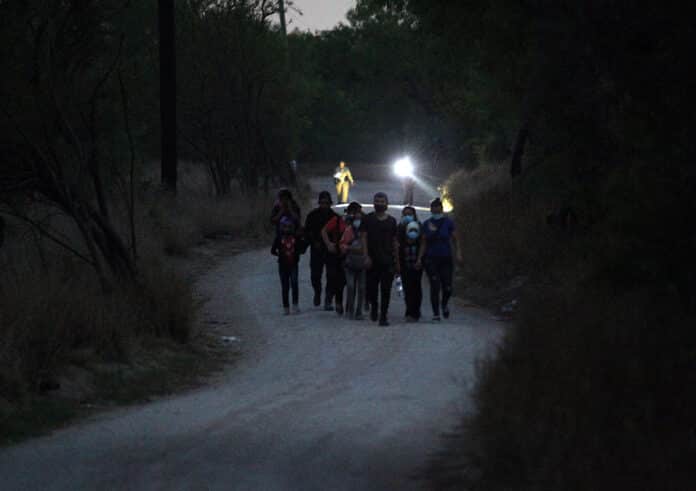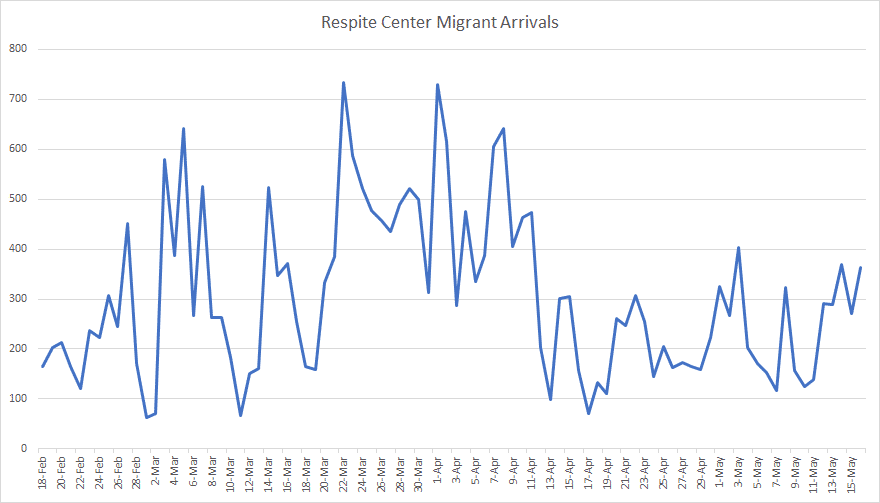
Disagreement over the winding down of the Biden administration’s practice of sending most asylum seekers immediately back to Mexico has kept the policy in place, even though Border Patrol was told to prepare for its end on two separate occasions.
The practice follows a CDC order implemented in March 2020 under a federal public health authority known as Title 42. It’s been used to quickly expel migrants from the U.S. if they come “from countries where a quarantinable communicable disease exists” without the opportunity to request asylum.
It was an unprecedented move by the Trump administration, effectively blocking anyone from seeking asylum, which immigrant advocates have been trying to end.
Word of an official end to the use of Title 42 started this spring, but never came to be. U.S. Border Patrol agents were advised to prepare for an end to Title 42 expulsions during a meeting with federal officials in San Antonio in mid-May, according to sources familiar with the situation.
They were told to prepare to end the practice on May 21. It was the second time an end date was shared; the first time was in March of 2021.
Since the policy was put in place, about 755,000 people who entered the country were expelled, according to government data.
Certain families and children coming to the border without their parents were excluded. A combination of an influx, limited processing space in the Rio Grande Valley, and restrictive shelter policies in Tamaulipas led to overcrowding in Border Patrol detention facilities.
Some migrant families were released across the Valley in late January, after they were processed by Border Patrol. More releases are expected if Title 42 should come to an end.
Border Patrol sectors across the border began planning how to process thousands of migrants who are waiting and bottlenecked in Mexico — often in dangerous conditions — to seek asylum in the U.S.
But on May 21, the date they were told the expulsions would end, agents were advised Title 42 would remain in place for the time being.
No reason was given to explain the change in dates, but border lawmakers, both Democratic and Republican, believe it’s too soon to lift the restrictions.
“We are not ready for the end of Title 42,” U.S. Sen. John Cornyn, R-TX, said during Wednesday’s news conference at the Hidalgo-Reynosa International Bridge.
U.S. Rep. Henry Cuellar, D-Laredo, who accompanied Cornyn and other colleagues, agreed and added, “You don’t just get rid of something without a plan.”
Other border congressmen in the Valley expressed similar sentiments.
U.S. Rep. Filemon Vela, D-Brownsville, shared a similar sentiment when asked if he believed restrictions sending migrants back to Mexico should be lifted.
“No,” Vela said Friday. “That will be a matter of degree and depend on control of COVID-19 in Mexico and ensuring that we have appropriate testing and infection protocols to ensure we are not putting our own population at risk in light of our current success in beating back the virus.”
U.S. Rep. Vicente Gonzalez, D-McAllen, exhibited caution Friday.
“We can’t just flip the switch,” Gonzalez said. “And, I think we have to be very careful and not overwhelm our border communities.”
Local communities and those who assist migrants, like Sister Norma Pimentel, said they anticipate an increase in families released at shelters and bus stations.
“When and if Title 42 is lifted, I think that we will do what we’ve done in the past with the collaboration of so many, especially local, from the community, that step up and help and provide the assistance to help the families,” Pimentel said.
Pimentel oversees operations at the Catholic Charities of the Rio Grande Valley’s Humanitarian Respite Center in McAllen. The number of migrants released to them fluctuated as policies shifted.

The greatest spike in the families arriving at the shelter was seen in late March when overcrowding at Border Patrol facilities led to mass releases of migrants, many of whom did not receive an immigration court date, which is a standard practice.
In the Valley alone, those released through that process amounted to about 40,000 people. Chief Patrol Agent Brian Hastings of the Rio Grande Valley sector said he’d never witnessed these kinds of releases during his 25-year career.
Other modifications to the way Title 42 was implemented allowed some migrants through the border.
On May 13, the Department of Homeland Security, which oversees Border Patrol, announced a streamlined process to allow vulnerable migrants into the country through a humanitarian exception in the CDC order.
Later that month, flights and buses that would transport migrants from busy Border Patrol sectors, like the Rio Grande Valley, to other cities like El Paso and San Diego were discontinued, and Pimentel noticed an increase once again at the respite center.
Throughout the year, however, government officials have met with non-governmental partners, including those across the Valley to prepare them for any possible fluctuations.
Partnerships between the government and humanitarian coalitions are poised to play a vital role when the ability to request asylum in the United States is reinstated. The Associated Press has reported that several organizations were already tapped to recommend migrants who should be allowed into the country.
Pimentel said she will be assisting HIAS, one of the NGOs asked to help, in identifying migrants with delicate cases.
NGOs began assisting the federal government in late February when thousands of migrants who were sent back to Mexico to wait for their U.S. immigration court hearings were allowed to re-enter the country.
“We’re receiving that information in advance with the assistance of the NGOs. It’s a faster processing time at the back end,” Aaron Bowker, the director of communications and public affairs liaison for the Office of Field Operations, said Friday.
“It shows what the technology can do, because when we have the advanced information,” Bowker said, “and that sometimes includes the biometrics, facial comparison, and things like that, it speeds up the processing a little bit for us on the back end because now it’s not a surprise anymore.”
So far, Pimentel said none of the shelters in the Valley have reached maximum capacity throughout the year, and many, with the exception of the respite center in McAllen and shelter in Brownsville, sit largely empty.
Cornyn expects that to change if expulsions are no longer the standard practice.
“The worst thing that can happen is for Title 42 to expire and then without any transition plan being put in place, completely disarm the Border Patrol and CBP from dealing with the mass of humanity that is sure to come,” he said Wednesday.
Pimentel felt confident the community would be ready to respond, come what may.
“If everyone steps up and assists in volunteering and supporting this effort,” Pimentel said, “I think that we would be doing a good thing for the families that will enter and will not remain in Mexico as they are right now, especially in the area of Reynosa.”




